Hampton, Virginia, Hgh State Clinic, Hgh Injections, Hrt Doctors
Hampton, Virginia Blood Testing Facilities
 Represents a LabCorp blood testing facility
Represents a LabCorp blood testing facility Represents a Quest Diagnostics blood testing facility
Represents a Quest Diagnostics blood testing facility

Nearby Labcorp Blood Testing facilities:
- Labcorp Center Distance: 3 m, 1511 Hardy Cash Drive, Hampton, Other, VA, 23666
- Labcorp Center Distance: 8 m, 860 Omni Blvd Ste 201, Newport News, Other, VA, 23606
- Labcorp Center Distance: 11 m, 3270 Academy Ave, Portsmouth, Other, VA, 23703
- Labcorp Center Distance: 15 m, 1020 Independence Blvd Ste 201, Virginia Beach, Other, VA, 23455
- Labcorp Center Distance: 19 m, 805 Battlefield Blvd N, Chesapeake, Other, VA, 23320
- Labcorp Center Distance: 21 m, 729 First Colonial Road, Virginia Beach, Other, VA, 23451
- Labcorp Center Distance: 23 m, 2000 Meade Pkwy, Suffolk, Other, VA, 23434
- Labcorp Center Distance: 57 m, 34-D Medical Park Blvd, Petersburg, Other, VA, 23805
- Labcorp Center Distance: 58 m, 4700 Puddledock Road Ste 200, Prince George, Prince George County, VA, 23875
- Labcorp Center Distance: 67 m, 1413 Tappahannock Blvd Ste 2, Tappahannock, Essex County, VA, 22560
- Labcorp Center Distance: 70 m, 8239 Meadowbridge Road Ste B, Mechanicsville, Hanover County, VA, 23116
- Labcorp Center Distance: 72 m, 2500 Pocoshock Place 105-106, Richmond, Chesterfield County, VA, 23235
- Labcorp Center Distance: 73 m, 7311 Boulder View Ln, Richmond, Chesterfield County, VA, 23225
- Labcorp Center Distance: 74 m, 8040 Villa Park Dr, Richmond, Henrico County, VA, 23228
- Labcorp Center Distance: 75 m, 5855 Bremo Road Suite 303, Richmond, Henrico County, VA, 23226
- Labcorp Center Distance: 76 m, 7001 Forest Ave Ste 202, Richmond, Henrico County, VA, 23230
- Labcorp Center Distance: 78 m, 13700 St Francis Blvd Ste 304, Midlothian, Chesterfield County, VA, 23114
- Labcorp Center Distance: 81 m, 611 Watkins Centre Pkwy 320, Midlothian, Chesterfield County, VA, 23114
- Labcorp Center Distance: 83 m, 500 Market St Ste 109, Pocomoke City, Worcester County, MD, 21851
- Labcorp Center Distance: 99 m, 106 Milford St Ste 303, Salisbury, Wicomico County, MD, 21804
Nearby Quest Blood Testing facilities:
- Quest Center Distance: 2 m, 2040 Coliseum Drive, Hampton, Other, VA, 23666-3200
- Quest Center Distance: 8 m, 11717 Jefferson Ave, Newport News, Other, VA, 23606-1935
- Quest Center Distance: 14 m, 885 Kempsville Circle, Norfolk, Other, VA, 23502-3800
- Quest Center Distance: 17 m, 4876 Baxter Road, Virginia Beach, Other, VA, 23462-4404
- Quest Center Distance: 57 m, 34 Medical Park Blvd, Petersburg, Other, VA, 23805-9283
- Quest Center Distance: 77 m, 8002 Discovery Dr, Richmond, Henrico County, VA, 23229-8601
- Quest Center Distance: 78 m, 8921 Three Chopt Rd, Richmond, Henrico County, VA, 23229-4601
Virginia Hormone Replacement Therapy Services
The Conscious Evolution Institute specializes in medical treatments designed to restore hormone balance in order to help you live a healthier life. Many of the medical issues that we face that are often attributed to the aging process are actually the result of changes in hormone production which hinder our ability to live the lives that we want to live.
Low-T Treatments in Virginia
Do you feel like your sexual performance isn't up to snuff lately? If you are over the age of thirty, you may be suffering from a condition known as Andropause, which limits your ability to engage in happy and healthy sexual activity. The Conscious Evolution Institute can get you back on the right track and get you back to your peak sexual condition.
Testosterone Deficiency also has a negative impact on your health and wellness, and is associated with a number of health conditions that can increase your mortality risk and negative impact your quality of life, such as obesity, diabetes, and heart disease.
HGH Therapy in Virginia
Testosterone Deficiency is not the only age-related problem that can impact the lives of men and women. Human Growth Hormone Deficiency can also powerfully degrade human health and wellness. HGH is responsible for sustaining the optimal rate of cellular metabolism, and many physicians argue that Hormone Imbalance is one of the core causes of aging.
If you are suffering from symptoms associated with HGH Deficiency, including fatigue, foggy memory, lack of focus, and changes in body composition, Physician-Monitored, Bio-Identical HGH Therapy can restore your body's natural and youthful hormone balance to improve your life.
Sermorelin Therapy in Virginia
If you are interested in alternatives to Bio-Identical Growth Hormone, you may be interested in Sermorelin Acetate Therapy. This form of treatment provides similar results to HGH Injections, but sustains the optimal function of the pituitary. The Conscious Evolution Institute can help you decide which treatment is best for your health and your budget.
HCG Services in Virginia
Another treatment that we provide at the Conscious Evolution Institute is HCG Therapy for Weight Loss. If you are having major issues losing weight, or you are just looking for an effective method to help you shave off a few pounds, HCG Injections combined with a specialized nutrition plan can help you burn off those extra pounds safely and swiftly.
Major Cities in the State of Virginia
Virginia Beach
Virginia Beach is the largest city in the state of Virginia, located where the southern portion of the Chesapeake Bay and the Atlantic Ocean meet. Virginia Beach also has the distinction of having the Guinness Record for the longest designed pleasure beach on earth. Virginia Beach has a highly diverse economy, with an emphasis on both tourism and military occupations. The city also has a large agriculture sector.
The entire region, which includes Newport News, Chesapeake, and Norfolk, is often referred to as America's First Region. This is because it is one of the first heavily settled areas of the United States by British settlers, and the many cities rose together in the same period.
Norfolk
Norfolk, Virginia is located to the northwest of Virginia Beach, and is the second largest city in the state. Norfolk is home to the biggest United States Navy base on the planet, and is the center of the economy for the entire Hampton Roads region. Norfolk is one of the oldest cities in the United States, founded in 1619.
Although Virginia Beach is the vacation destination of the region, Norfolk is considered the seat of culture and opportunity for the area. Over the past decades, Norfolk has undergone a tremendous period of revitalization, providing national acclaim for the city and the region. Old Dominion is the largest and most acclaimed University in the city.
Chesapeake
Chesapeake, Virginia is located inland immediately west of both Norfolk and Virginia Beach. It is the third largest city in the state both by land area and population. Over recent decades, portions of Chesapeake have been undergoing a fairly rapid increase in population, as more and more people move to the area to take advantage of new suburban communities.
Chesapeake is widely acclaimed for its demographic and ecological diversity. It is a large city with a lot to offer. The city is more urban closer to Norfolk, but there is a heavy agricultural presence further from the core of the region, and there are large amounts of protected forests and ecological areas, including a large area of the Great Dismal Swamp.
Richmond
Richmond, Virginia is the capital of Virginia, and is the fourth largest city in the state. Richmond has been a very important city in American history, serving as an industrial hub early in the early years of the United States. When the Civil War broke out in 1865, Richmond served as the capital of the Confederacy for the majority of the war.
The capital is considered one of the best cities in the country for business, and is home to a number of Fortune 500 companies. Richmond also also has a number of universities, the most significant of which are the private Richmond University and the public Virginia Commonwealth University. The most famous historical resident of Richmond was Edgar Allen Poe, and there is a museum in the city which displays artifacts from his life and the time period.
Newport News
Newport News is located to the north of Norfolk Virginia, just across the James River. The city is also on the edge of the Virginia Peninsula. Norfolk is considered the central commercial hub of the region, but Newport News is the second most important business district. Like Norfolk, Newport News has a strong military presence, and is home to the merged Langley-Eustis joint Air Force and Army base.
The city is not limited only to military influence, however. Newport News is a very important transportation hub, with its most important location being the Newport News Marine Terminal.
All About Hampton, Virginia Geographic Area
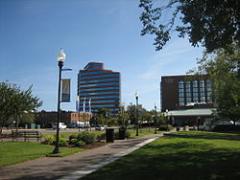
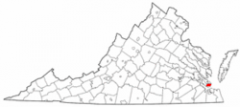
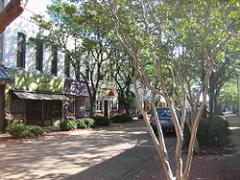
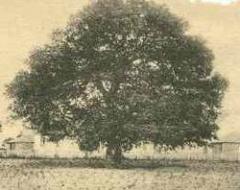
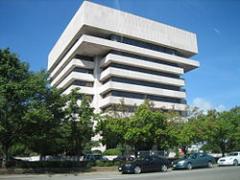
Hampton is an independent city in Virginia. Its population is 137,436. As one of the seven major cities that compose the Hampton Roads metropolitan area, it is on the southeastern end of the Virginia Peninsula.
Hampton traces its history to 1610. The city's Old Point Comfort, home of Fort Monroe for almost 400 years, was named by the voyagers of 1607 led by Captain Christopher Newport on the mission which first established Jamestown as a British colony. Since 1952, Hampton has included the former Elizabeth City County and the incorporated town of Phoebus, consolidating by mutual agreement. After the end of the American Civil War, historic Hampton University was established here, providing an education for many of the newly freed former slaves. In the 20th century, the area became the location of Langley Air Force Base, NASA Langley Research Center, and the Virginia Air and Space Center. Hampton features many miles of waterfront and beaches.
In modern times, Hampton has become the sixth most populous city in Virginia. According to the 2010 Census, the city population is 137,436. For residents and visitors alike, the city features a wide array of business and industrial enterprises, retail and residential areas, and historical sites. Most recently, the new Peninsula Town Center development opened in May 2010 on the site of the former Coliseum Mall. Located in the area adjacent to the Hampton Coliseum and the Convention Center, the new urbanism-type project features a wide mix of retail stores, housing and other attractions. Development of new residential development and additional public facilities (such as the new fishing pier recently opened) are underway at Buckroe Beach, long a noted resort area.
Located on the Hampton Roads Beltway, it hosts the Hampton Roads Bridge-Tunnel (HRBT) on Interstate 64. First opened in 1957, it was the world's first bridge-tunnel, crossing the mouth of the James River, which serves as the gateway to the Chesapeake Bay and the Atlantic Ocean from the eastern United States' largest ice-free harbor and its tributary rivers. Expanded in the 1970s, the HRBT remains Virginia's busiest and deepest such facility.
In December 1606, three ships carrying men and boys left England on a mission sponsored by a proprietary company. Headed by Captain Christopher Newport, they sailed across the Atlantic Ocean to North America. After a long voyage, they first landed at the entrance to the Chesapeake Bay on the south shore at a place they named Cape Henry (for Henry Frederick, Prince of Wales, the elder son of their king).
During the first few days of exploration, they identified the site of Old Point Comfort (which they originally named "Point Comfort") as a strategic defensive location at the entrance to the body of water that became known as Hampton Roads. This is formed by the confluence of the Elizabeth, Nansemond, and James rivers. The latter is the longest river in Virginia.
A few weeks later, on May 14, 1607, they established the first permanent English settlement in the present-day United States about 25 miles (40 km) further inland from the Bay along the James River at Jamestown. The area around Old Point Comfort became the site of several successive fortifications during the following 200 years.
Slightly south, near the entrance to Hampton River, the colonists seized the Native American community of Kecoughtan under Virginia's Governor, Sir Thomas Gates. The colonists established their own small town, with a small Anglican church (known now as St. John's Episcopal Church), on July 9, 1610. This came to be known as part of Hampton. (Hampton claims to be the oldest continuously occupied English settlement in the United States). Hampton was named for Henry Wriothesley, 3rd Earl of Southampton, an important leader of the Virginia Company of London, for whom the Hampton River, Hampton Roads, Southampton County and Northampton County were also named. The area became part of Elizabeth Cittie [sic] in 1619, Elizabeth River Shire in 1634, and was included in Elizabeth City County when it was formed in 1643. By 1680, the settlement was known as Hampton, and it was incorporated as a town in 1705 and became the seat of Elizabeth City County.
In the latter part of August 1619, a Dutch ship, the White Lion, appeared off the coast of Old Point Comfort. Its cargo included 20 plus Africans captured from the slave ship Sao Joao Bautista. These were the first Africans to come ashore on English-occupied land in what would become the United States. John Rolfe, the widower of Pocahontas, wrote in a letter that he was at Point Comfort and witnessed the arrival of the first Africans. Although these first Bantu men from Angola were considered indentured servants, their arrival marked the beginning of slavery in North America. Two of the first Africans to arrive at Old Point Comfort in 1619 were Antonio and Isabella. Their child, the first of African descent born in North America, was born in January 1624.
Shortly after the War of 1812, the US Army built a more substantial stone facility at Old Point Comfort. It was called Fort Monroe in honor of President James Monroe. The new installation and adjacent Fort Calhoun (on a man-made island across the channel) were completed in 1834.
Fort Monroe, Hampton and the surrounding area played several important roles during the American Civil War (1861 ae1865). Although most of Virginia became part of the Confederate States of America, Fort Monroe remained in Union hands. It became notable as a historic and symbolic site of early freedom for former slaves under the provisions of contraband policies and later the Emancipation Proclamation. After the War, former Confederate President, Jefferson Davis was imprisoned in the area now known as the Casemate Museum on the base.
To the south of Fort Monroe, the Town of Hampton had the misfortune to be burned during both the American Revolutionary War and the American Civil War. From the ruins of Hampton left by evacuating Confederates in 1861, "Contraband" slaves (formerly owned by Confederates and under a degree of Union protection) built the Grand Contraband Camp, the first self-contained African American community in the United States. A number of modern-day Hampton streets retain their names from that community. The large number of contrabands who sought the refuge of Fort Monroe and the Grand Contraband Camp led to educational efforts which eventually included establishment of Hampton University, site of the famous Emancipation Oak.
The original site of the Native American's Kecoughtan Settlement was near the present site of a Hampton Roads Transit facility. To the south of present-day Hampton, a small unrelated incorporated town also named Kecoughtan many years later and also located in Elizabeth City County was annexed by the city of Newport News in 1927. It is now part of that city's East End.
Hampton was incorporated as a city in 1849. On March 30, 1908, Hampton was separated from Elizabeth City County and became an independent city. However, it remained the county seat and continued to share many services with the county. On July 1, 1952, following approval of voters of each locality by referendum, the city of Hampton, the incorporated town of Phoebus and Elizabeth City County merged into the independent city of Hampton. It was the first of a series of political consolidations in the Hampton Roads region during the third quarter of the 20th century.
Hampton also has a rich and extensive 20th-century military history, home of Langley Air Force Base, the nation's first military installation dedicated solely to airpower and the home of the U.S. Air Force's 633d Air Base Wing and 1st and 192nd Fighter Wings. Hampton has been a center of military aviation training, research and development for nearly a hundred years, from early prop planes and Zeppelins to rocket parts and advanced fighters. Its proximity to Norfolk means that Hampton has also long been home to many Navy families. Together many Air Force and Navy families in the Hampton area experienced significant losses both in war and also peacetime due to husbands and fathers in combat and also peacetime military accidents.
Hamptons waiting families: The "waiting family" is one of the enduring stories of Hampton and the wider Hampton Roads area as thousands of military families stationed in the Hampton area have long waited for airmen and sailors on deployment both during wartime and peacetime. Consequently, many military families who were stationed in Hampton feel a strong connection to the area. Langley AFB During the Vietnam War: In particular, during the Vietnam War, Langley Air Force Base was a designated 'waiting base' and thousands of Air Force families were transferred to Hampton from all over the world in order to wait while their husbands and fathers served in Vietnam. Thousands of Navy families associated with Naval bases in Norfolk next door also waited in Hampton during this era. Vietnam was a very high casualty war for both Air Force and Navy pilots (some types of planes experienced a 50% casualty rate), and Naval "river rats" who fought on the rivers of the Mekong Delta experienced high casualties as well. There consequently accumulated over time, in the Hampton area, a high concentration of families of unnaccounted for wartime casualties. In many cases Hampton-stationed military families of "Missing in Action" or "Prisoner of War" pilots and sailors spent many years in the Hampton area waiting to find out what had happened to their missing or captured airmen and sailors, and so the service and, in some cases sacrifice, of these pilots, airmen, sailors and their families, despite not having lifelong connections to the area, are also a poignant and inspiring part of Hampton's history.
Hampton is located at 37 °2 a²5 a³N 76 °21 a²36 a³W / 37.03472 °N 76.36 °W / 37.03472; -76.36 (37.034946, -76.360126).
According to the United States Census Bureau, the city has a total area of 352.8 square kilometers (136.2 sq mi). 134.1 square kilometers (51.8 sq mi) of it is land and 218.7 square kilometers (84.4 sq mi) of it (61.99%) is water.
Hampton's mild four season climate means outdoor activities can be enjoyed year round. The weather in Hampton is temperate and seasonal. Summers are hot and humid with cool evenings. The mean annual temperature is 70 °F (21 °C), with an average annual snowfall of 6 inches (150 mm) and an average annual rainfall of 47 inches (1,200 mm). No measurable snow fell in 1999. The wettest seasons are the spring and summer, although rainfall is fairly constant all year round. The highest recorded temperature was 105.0 °F (40.6 °C) in 1980. The lowest recorded temperature was na7 °F ( na21.7 °C) on January 21, 1985.
Additionally, the geographic location of the city, with respect to the principal storm tracks, is especially favorable, as it is south of the average path of storms originating in the higher latitudes, and north of the usual tracks of hurricanes and other major tropical storms. With the exception of Hurricane Isabel in 2003.
As of the census of 2010, there were 137,436 people, 53,887 households, and 35,888 families residing in the city. The population density was 2,828.0 people per square mile (1,091.9/km ²). There were 57,311 housing units at an average density of 1,106.8 per square mile (427.3/km ²). The racial makeup of the city was 42.7% White, 49.6% Black or African American, 0.4% Native American, 2.2% Asian, 0.1% Pacific Islander, 1.3% from other races, and 3.7% from two or more races. 4.5% of the population were Hispanic or Latino of any race.
There were 53,887 households out of which 32.5% had children under the age of 18 living with them, 46.2% were married couples living together, 16.4% had a female householder with no husband present, and 33.4% were non-families. 26.6% of all households were made up of individuals and 7.9% had someone living alone who was 65 years of age or older. The average household size was 2.49 and the average family size was 3.02.
The age distribution is 24.2% under the age of 18, 12.6% from 18 to 24, 32.5% from 25 to 44, 20.4% from 45 to 64, and 10.3% who were 65 years of age or older. The median age was 34 years. For every 100 females there were 98.3 males. For every 100 females age 18 and over, there were 96.6 males.
Population update: estimated population in July 2002: 145,921 (-0.4% change) Males: 72,579 (49.6%), Females: 73,858 (50.4%) Source
The Census estimate for 2005 shows that the city's population was down slightly to more, 145,579.
The median income for a household in the city was $39,532, and the median income for a family was $46,110. Males had a median income of $31,666 versus $24,578 for females. The per capita income for the city was $19,774. About 8.8% of families and 11.3% of the population were below the poverty line, including 15.9% of those under age 18 and 8.6% of those age 65 or over.
Hampton's daily newspaper is the Newport News-based Daily Press. Other papers include Norfolk's The Virginian-Pilot, Port Folio Weekly, the New Journal and Guide, and the Hampton Roads Business Journal. Hampton Roads Magazine serves as a bi-monthly regional magazine for Hampton and the Hampton Roads area. Hampton Roads Times serves as an online magazine for all the Hampton Roads cities and counties. Hampton is served by a variety of radio stations on the AM and FM dials, with towers located around the Hampton Roads area.
Hampton is also served by several television stations. The Hampton Roads designated market area (DMA) is the 42nd largest in the U.S. with 712,790 homes (0.64% of the total U.S.). The major network television affiliates are WTKR-TV 3 (CBS), WAVY 10 (NBC), WVEC-TV 13 (ABC), WGNT 27 (CW), WTVZ 33 (MyNetworkTV), WVBT 43 (Fox), and WPXV 49 (ION Television). The Public Broadcasting Service station is WHRO-TV 15. Hampton residents also can receive independent stations, such as WSKY broadcasting on channel 4 from the Outer Banks of North Carolina and WGBS-LD broadcasting on channel 11. Hampton is served by Verizon FiOS and Cox Cable which provides LNC 5, a local 24-hour cable news television network. DirecTV and Dish Network are also popular as an alternative to cable television in Hampton.
Hampton is home to the Peninsula Pilots of the Coastal Plain League, a collegiate summer baseball league. The Pilots play at War Memorial Stadium in Hampton. The team began playing in Hampton in the 1980s.
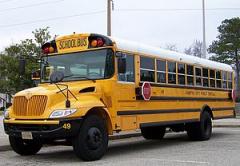
America's first free public school, the Syms-Eaton Academy, was established in Hampton in 1634. It was later renamed Hampton Academy and in 1852 became part of the public school system. Hampton High School traces its origin to the Syms-Eaton school and thus lays claim to being the oldest public school in the United States. The trust fund created from the Syms and Eaton donations has remained intact since the 17th century and was incorporated into support for the Hampton public school system. Hampton City Public Schools currently operates the following schools.
Private schools include:
Hampton University provides a private collegiate education.
Thomas Nelson Community College serves as the community college. Located in the north side of Hampton and in nearby Williamsburg, Thomas Nelson offers college and career training programs.
Public universities that are outside but near Hampton include Christopher Newport University, Old Dominion University, Norfolk State University, and The College of William and Mary.
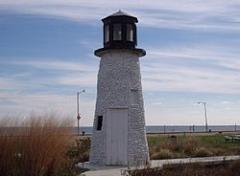
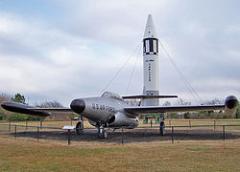
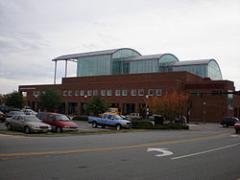
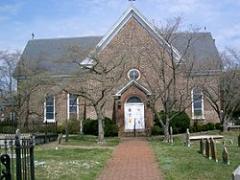
In the Hampton Roads region, water crossings are a major issue for land-based transportation. The city is fortunate to have a good network of local streets and bridges to cross the various rivers and creeks. Many smaller bridges, especially those along Mercury Boulevard, were named to honor the original NASA astronauts, who had trained extensively at NASA's Langley facilities.
The city is located contiguously to the neighboring independent cities of both Newport News and Poquoson. Many roads and streets are available to travel between them. Likewise, Williamsburg, Yorktown and the counties of James City and York are also located nearby in the Peninsula subregion, and many roads lead to them.
To reach most of its other neighbors in the South Hampton Roads subregion, it is necessary to cross the harbor and/or the mouth of the James River. There are 3 major motor vehicle crossings. Among these are the Hampton Roads Bridge-Tunnel (HRBT) and the Monitor-Merrimac Memorial Bridge-Tunnel (MMMBT), each forming part of the Hampton Roads Beltway. The HRBT is located on Interstate 64 near downtown Hampton and the MMMBT is a few miles away on Interstate 664 near downtown Newport News. (These two major interstates converge in Hampton near the Hampton Coliseum). The third crossing option is the James River Bridge, also in Newport News, which connects to Isle of Wight County and the town of Smithfield.
Hampton is also served by several major primary and secondary highways. These notably include U.S. Routes 17, 60 and 258, and Virginia State Routes 134 and 143.
Traffic congestion is challenging for drivers in the entire Hampton Roads region, particularly during peak commute periods and holiday weekends. Traffic cams and electronic signage help keep motorists aware of trouble spots. Virginia 511 offers telephone traffic information from VDOT as well.
The Hampton Transit Center, located 2 West Pembroke Boulevard, at the intersection of King Street, close to the downtown area, offers a hub for local and intercity public transportation. It hosts HRT buses, Greyhound/Trailways services and taxicabs.
Hampton Roads Transit (HRT) is the local provider of transit service within the city, as well offering a regional bus system with routes to and from seven other cities in Hampton Roads.
Intercity bus service is provided by Greyhound Lines and its Carolina Trailways affiliate. The buses serve the Hampton Transit Center.
Hampton is served by several Amtrak trains a day, with direct service from a station in nearby Newport News (on Warwick Boulevard just west of Mercury Boulevard) through Williamsburg and Richmond to points along the Northeast Corridor from Washington DC through Baltimore, Philadelphia, and New York City all the way to Boston. At Richmond, connections can be made for other Amtrak destinations nationwide.
Virginia is actively working on plans to expand the frequency of the locally offered Amtrak services.
Hampton is served by two commercial airports. Newport News/Williamsburg International Airport (IATA: PHF) is located in Newport News, and Norfolk International Airport (IATA: ORF, ICAO: KORF, FAA LID: ORF), is located across the harbor in Norfolk. Both are located along portions of Interstate 64.
The primary airport for the Virginia Peninsula is the Newport News/Williamsburg International Airport located nearby in Newport News. Originally known as Patrick Henry Field (hence its airline code letters "PHF"), it was built on the site of Camp Patrick Henry, formerly a World War II facility. It is one of the fastest growing airports in the country, and it reported having served 1,058,839 passengers in 2005. The airport recently added a fourth airline carrier, Frontier Airlines, becoming the first new airline to come to the region in over eight years, despite the economic recession conditions. 2010 will likely be the busiest year by passenger count in the airport's history.
The larger Norfolk International Airport (often known locally by its code letters "ORF") also serves the region. The ORF airport is located near the Chesapeake Bay, along the city limits between Norfolk and Virginia Beach. Seven airlines provide nonstop services to twenty five destinations. During a recent year, ORF had 3,703,664 passengers take off or land at its facility and 68,778,934 pounds of cargo were processed through its facilities.
The Chesapeake Regional Airport provides general aviation services. It is located in South Hampton Roads in the independent city of Chesapeake.
Hampton has four sister cities:
Word Count: 4147






